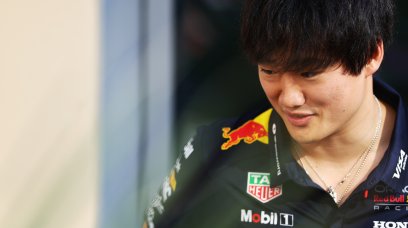Ten races down in 2022 and porpoising remains a hot topic of debate in Formula 1. Following the Azerbaijan Grand Prix, the FIA took the decision to intervene in an attempt to protect drivers from the effect of severe, as they put it, "vertical oscillations". They did so after a race in which Lewis Hamilton, Daniel Ricciardo and a number of others were left complaining of back pain, while Pierre Gasly revealed he was fighting through the weekend thanks to painkillers. The FIA then issued a Technical Directive (TD) aimed at tackling porpoising and preventing teams from running a car that could put their drivers at risk. The rules appeared simple: if your car bounces too much or too severely, then you must raise your ride height or risk disqualification. However, amid a period of data collection, it was decided that those rules would not come into play until the French Grand Prix weekend - but what is the latest on the incoming rule changes?
Formula determined with teams warned
Ahead of the British Grand Prix, F1 teams received a new draft version of the TD featuring several changes, RacingNews365.com has learned. Despite being only a draft, and with the teams still having a week to provide feedback, the FIA has emphasised that teams should now start making changes to their cars. A very complex mathematical formula has been set up to determine the degree of porpoising allowed. That has set a bouncing limit that will apply from the French GP onwards - but it can be increased or decreased at a later date should that be required. How much a car bounces will be measured by sensors during every lap, with some exceptions: the first two laps of the race, laps behind the Safety Car, in-laps and out-laps, and laps on Wet or Intermediate tyres. In future, more sensors may be added to the cars to measure bouncing more accurately. Should a car bounce more than is allowed, the FIA race director will forward the matter to the stewards, advising that the driver in question be disqualified. During the race in Austria, the metric will be reviewed in order to learn whether it needs any last-minute adjustment. It will then be applied during the French GP, the next stop on the F1 road trip. However, the FIA has warned that teams who have damaged the underfloor plank from bouncing too much (i.e. the wear from bouncing makes the plank too thin) could be referred to the stewards post-race.
Have the rules changes regarding the floor?
The FIA has also introduced new rules regarding the skid planks under the floor of F1 cars. These changes will revolve around the flexibility of the floor's bottom plates. In order to ensure the new bouncing formula is fair for all teams, the floor must not flex more than two millimetres, the FIA have emphasised. However, according to the technical regulations, there are three places on the plank where flexibility is measured with no rules in place regarding flexibility elsewhere. The rules, therefore, suggest that the plank may bend a maximum of 2 millimetres in places where measurements are taken but can flex more in others The FIA is looking to clamp down on that from the French GP onwards: the board may only bend 2 millimetres across its entire length with some wriggle room (a rumoured 10%) being allowed. Should a team run a car with a plank too flexible, the FIA will consider the car to be in deliberate breach of the rules. The FIA is allowed to tighten up rules regarding flexibility testing without consultation, as is stated in the rule book. View our illustration of the floor below with the skid plank shown in gold:
What will happen in 2023?
Were it entirely up to the FIA, further action would be taken ahead of 2023 to rid Formula 1 of bouncing for good. The sport's governing body plan to do so by making the cars less susceptible to the phenomenon - although a large number of changes would have to be implemented to do so, in accordance with the Technical Regulations. Bringing about change will not be easy, little more than half a year before the 2023 season begins. Under the guise of safety, however, the FIA have more room to act. Over the coming races, the FIA wants teams to use CFD (Computational Fluid Dynamics) to assess various possible adjustments that can be made to cars. Some teams have already suggested possible changes to the FIA while Red Bull boss Christian Horner has pleaded that they do not "mess with" the 2023 rules. Horner said: "The rules have to be black and white. That's how we end up with encyclopaedias that are way too complicated. "There's no such thing as the intent of the rules. It's binary, it's one or the other."
Most read








